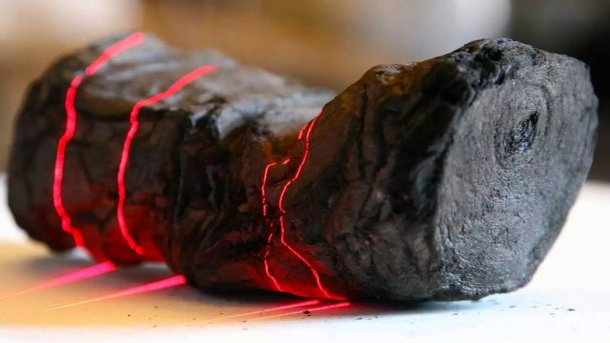AI helps historians: Largest expansion of ancient text sources in 100 years
Artificial intelligence is a beacon of hope for historians worldwide. It has already helped to make enormous progress in some projects.

One of the charred papyrus scrolls from an ancient library, whose texts were made readable again after being examined using a particle accelerator and with the help of AI analysis.
(Image: University of Kentucky)
Artificial intelligence is increasingly helping historians to decipher ancient writings. This was reported by the US science magazine Nature, citing various scientists interviewed. It is the largest expansion of ancient text sources in 100 years. Among other things, AI helps to complete unreadable scrolls, but also helps to understand and translate unknown languages.
The Herculaneum scrolls are cited as one example. Parts of them have been made readable for the first time in 2000 years with the help of machine learning. The scrolls, which were discovered during excavations between 1752 and 1754, were charred during the eruption of Mount Vesuvius in 79 AD. Although the burial of the city by lava and ash also led to the preservation of the ancient scrolls, it presented historians with a major challenge.
AI is much faster than humans
AI helped to distinguish the finest differences between ink and papyrus and to identify the writing by analyzing the surface texture. According to scientists, these and other AI processes ensure that a veritable flood of new texts can currently be made available for analysis in many research projects. AI is often much faster at deciphering characters or words because the technology can deduce their meaning more quickly from the context.
Other projects in which AI has already been used successfully include the translation of Hanja scripts. These are records of 27 former Korean kings from the 14th to the early 20th century, which would have taken human translators decades to complete. When analyzing linear scripts from Knossos, however, AI, together with human expertise, achieved a success rate of 72 percent in completing missing parts of the script.
Hope for rapid progress
The researchers hope to be able to use the technology to make hundreds of previously unopened scrolls legible. Documents from the Middle Ages, mummy wrappings from ancient Egypt and charred papyri could also be used to open up previously inaccessible historical sources.
(mki)